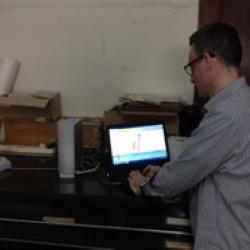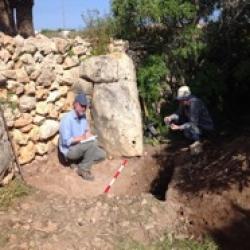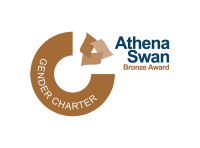
FRAGSUS: Fragility and Sustainability in the restricted island environments of Malta
Introduction
The FRAGSUS project based in the Queen's University Belfast, Cambridge and Malta, has been formed to study the sustainability and subsequent radical change amongst the Maltese Temple Building populations of prehistoric Malta in the 4th and 3rd millennia BC.
Key questions posed are:
- Why do some cultures manage to sustain their civilization for centuries or millennia, while others collapse in response to the impact of changing conditions in the wider environment?
- What factors lead to socio-economic decline and failure in a society?
- Can science, by employing a suite of interdisciplinary approaches, begin to explore and understand how humans interacted with and impacted on, the changing natural environment?
Human history is punctuated by the succession of changing cultures and civilization, many of which emerged and failed within decades or centuries. Change and instability imposed stress on these societies, causing either extinction or adaptation and evolution. However, there are few studied examples of the immensely important issue of adaptation towards sustainability in ancient society. In this project, we bring together key interdisciplinary approaches in environmental science, chronology, archaeology and biological anthropology to explore factors that underpinned the sustainability of a specific European island society. This research, using innovative fieldwork analysis and synthesis, may provide answers that are relevant today at a continental and even global scale.
There are two primary areas of research carried out by the Cambridge team in the current FRAGSUS project (please see below for more information):


NEWS:
- Eoin Parkinson (and colleagues) win Bill White prize for Best Student poster - The Brochtorff-Xagħra Circle digitising project at BABAO (British Association for Biological Anthropology and Osteoarchaeology), Annual Conference 2015. You can view the poster here
-
Recent press reports can be found here
-
A film by Rupert Barker on the project can be found here

The latest project news is tweeted at: #RKP_FRAGSUS



The Cambridge history of the project
The current project grew out of a long-standing collaboration between the University of Malta, the University of Cambridge, and the then Museums Department of Malta, and latterly Heritage Malta and the Superintendence of Cultural Heritage for Malta, led most recently by Queen's University Belfast. In 1985, Anthony Bonanno of the University of Malta held a conference on ritual in Malta to which he invited Colin Renfrew. Colin Renfrew took this opportunity to suggest renewed Anglo-Maltese collaboration to Maltese colleagues, and on receipt of a warm reception to this idea, invited David Trump, Caroline Malone and Simon Stoddart to collaborate with Tancred Gouder of the Museums Department and Anthony Bonanno of the University of Malta. The resultant Cambridge Gozo Project undertook fieldwork between 1987 and 1995, implementing geophysical and regional survey, environmental reconstruction (through the work of Patrick Schembri and Christopher Hunt on land snails), excavation of a remnant domestic structure, and, most importantly, the detailed excavation of c. 220,000 fragments of human bone from the Brochtorff Xaghra Circle. Further study of this material was undertaken and the results published (Malone et al. 2009). More work was undertaken in 2005-2007, principally by Caroline Malone, to develop wider ritual understanding of the Maltese monuments with the support of the Templeton Foundation (Malone et al. 2007). The project thus brings together a team where many members have been working together for almost thirty years.
Mortuary analysis
The first phases of the mortuary analysis have concentrated on the social anthropology of the human remains. Current work is now focusing on inferences from the human remains of health, stress and diet.
Teeth and Individual bones have been selected from specific contexts to look at changing lifestyles over time. Work has started on the most clearly closed contexts: the Zebbug chambered tomb and the stacks of articulated burials in the Tarxien period central shrine at the site. Innovative work includes the three dimensional scanning of long bones to analyse bone engineering. A parallel project will digitise a substantial sample of the locations of the c. 220,000 human bones recovered from the Circle to increase the analytical potential of contextual information.
Principal Collaborators
Landscape analysis
The landscape component of the project is examining the human influenced and built environment of Malta, and more particularly Gozo. Charly French and Sean Taylor are examining the soils and terracing of the landscape. Simon Stoddart is involved in sampling the individual sites by excavation. The work is closely coordinated with a survey undertaken by David Redhouse and colleagues from Belfast and Malta.
Principal Collaborators
Publications and Reports
The most recent reports of the project can be found in the European Archaeologist (Stoddart 2014; McLaughlin et al. 2015; Stoddart et al. 2015), on the Belfast Fragsus website and on the University of Malta website.
Barratt, R., Bennett, J. and Malone, C. 2014. Photogrammetric recording – new approaches to reconstructing archaeological features at the site of Taċ-Ċawla, Gozo. PAST 78: 14-16.
Malone, C., Stoddart, S., Trump, D., Bonanno, A., Gouder, T and Pace, A (eds.) 2009. Mortuary Ritual in Prehistoric Malta. The Brochtorff Circle Excavations (1987-1994). Cambridge, McDonald Institute.
Malone, C., Barrowclough, D.A. and Stoddart, S. 2007. Introduction. In Barrowclough, D and Malone, C. (eds.) Cult in Context. Oxford, Oxbow, 1-7.
McLaughlin, R, Stoddart, S. and Malone, C. 2015. Studying Sustainability and fragility in prehistoric Malta. European Archaeologist 45: 32-35.
McLaughlin, R, Malone, C. and Stoddart, S. 2015. The Xaghra plateau. A focal point in Gozo’s past. Festa Marija Bambina 2015: 42-45.
Stoddart, S. 2014. FRAGSUS. Fragility and sustainability in prehistoric Malta. European Archaeologist 41: 20-24.
Stoddart, S., Hunt, C., Malone, C, Pace, A., Stroud, K and Vella, N. 2015. FRAGSUS. Steady State, florescence and bust: an alternative insular model from Malta. European Archaeologist 45: 27-29.


